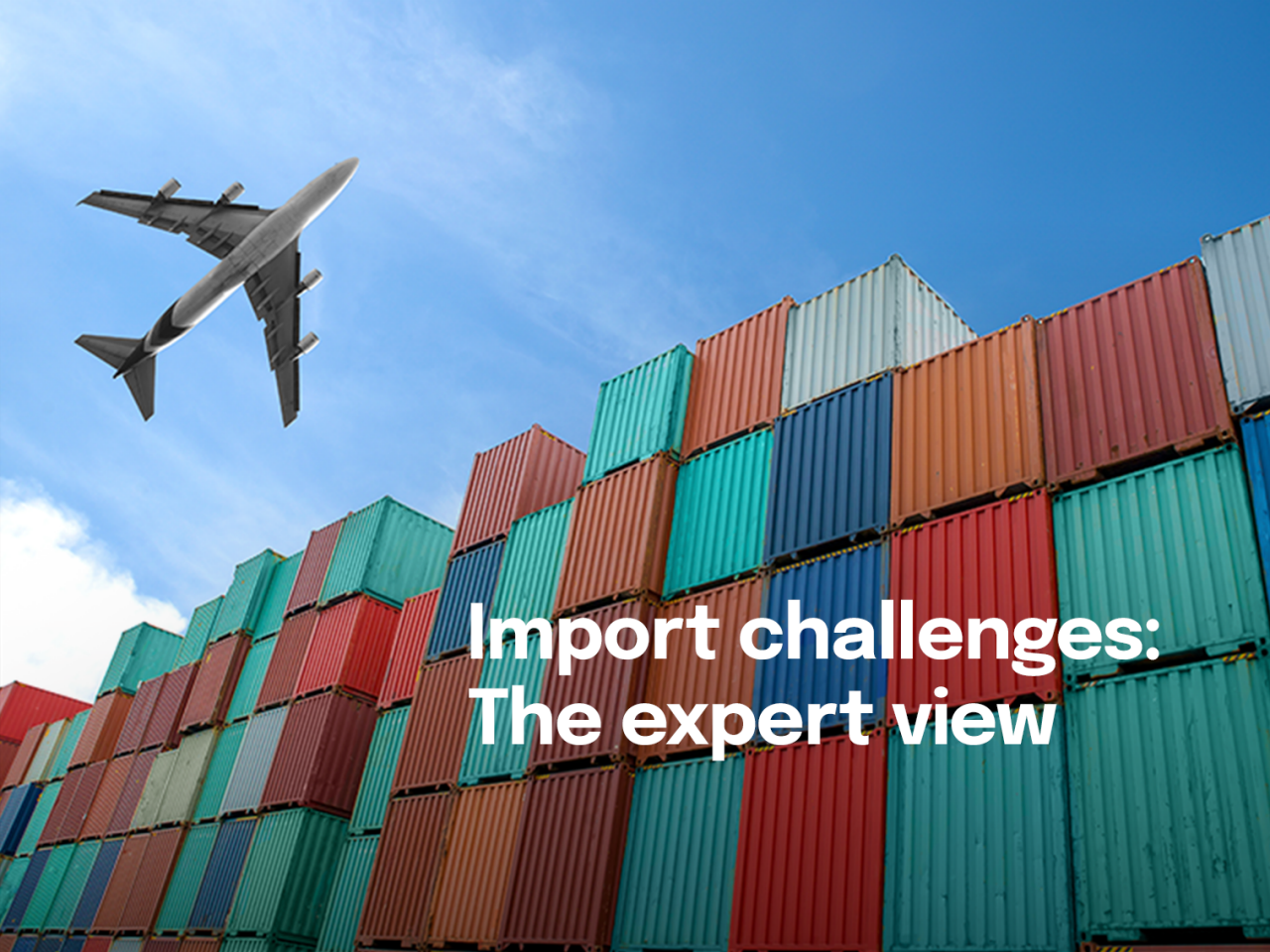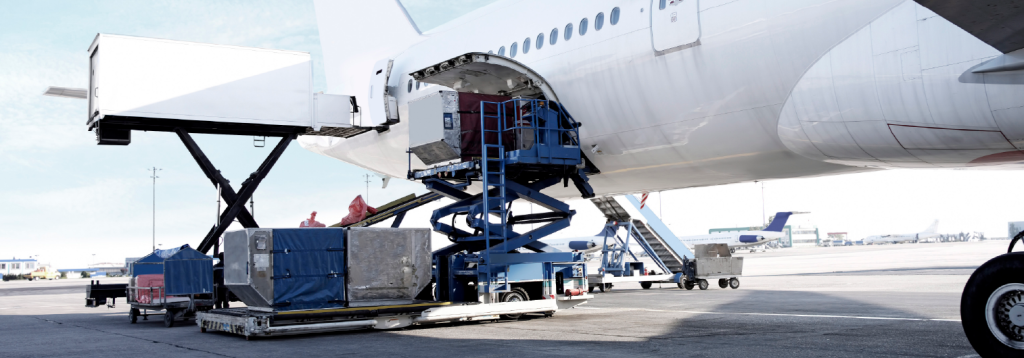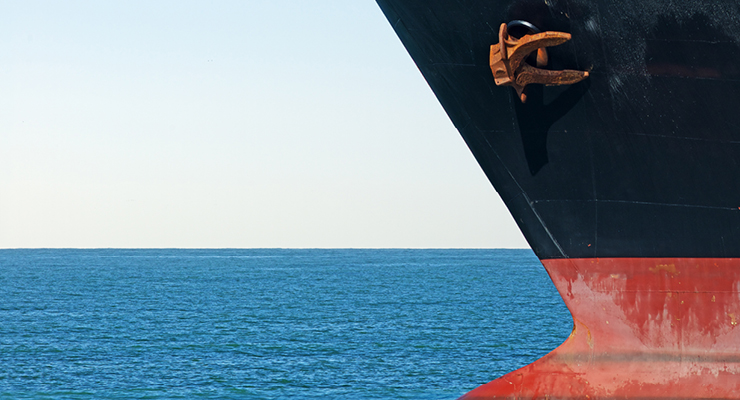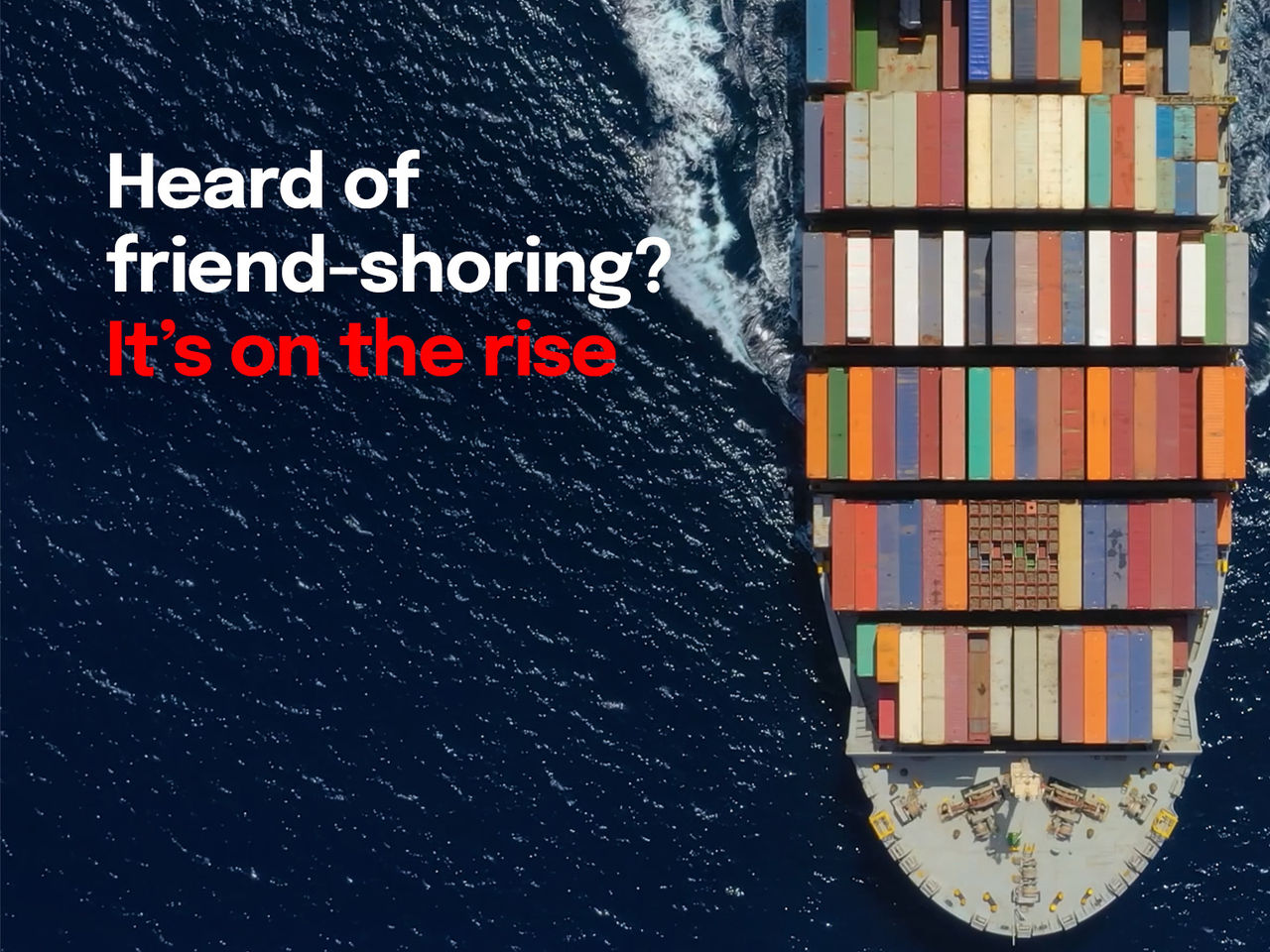28 April 2023
June 24, 2022
The changing world of imports: A view from the inside
An upended international trading environment brings both new pressures and fresh opportunities. In the second instalment of our Supply Chain Q&A; series, our experts examine how Australian importers are moving forward and gearing up for further growth.
By Business View

In March 2021, the container ship Ever Given infamously blocked the Suez Canal for six days. While resulting in much mirth across social media, more seriously the incident was estimated, opens in new window by insurer Allianz to have wiped between US$6 billion and US$10 billion off global trade.
Ever Given’s costly navigation blunder came as the global pandemic was already disrupting supply chains and increasing freight charges, and it highlighted just how complex and interdependent Australia’s importing businesses are in relation to global factors.
Michael Saadie, Executive Business Banking Metro at NAB, spoke to experts in the field to see how these critical importing businesses are balancing the competing pressures on their operations and how they can take advantage of strong consumer demand for goods.
Q&A participants
- Host: Michael Saadie, Executive Business Banking Metro, NAB
- Speaker: Anthony Vinson, Head of International Trade and Logistics, Freight & Trade Alliance
- Speaker: Jackie Cooper, Executive, Trade & Working Capital Business & Private Banking, NAB
Michael Saadie: So, we all know it’s been a challenging few years for many Australian businesses, but can you talk us through some of the specific factors that have impacted importers?
Anthony Vinson: COVID really impacted importers because it dramatically changed the supply chain globally. The supply chain is very complex and there are so many interrelated factors that feed into it. Prior to COVID, around 80 per cent of airfreight was carried in the cargo holds of passenger aircraft, so the decrease in the number of passenger aircraft caused a drop in capacity and a shift to sea freight, which in turn pushed up prices for importers.
At the same time, the pandemic spurred a change in consumer behaviour – when people were in lockdown they were spending less on services and more on goods, particularly those used in the home, such as furniture. Overall, global demand is far exceeding supply, which is difficult for importers.


Michael Saadie: It seems that whenever we get past one challenge, another arises – from a pandemic to wars to floods. The lesson is that adaptation has become critical in these times. What tactics and models have importers used, and how will these actions shore up their operations for the future?
Anthony Vinson: Many have adopted a ‘just in case’ model. For example, it might now take an importer 16 weeks to import stock that took six weeks pre-COVID. Previously, that importer might have held a month’s worth of stock, but now they are holding three months, just in case they get a lot of orders and cannot import additional stock in time.
The ones that have adapted the best are those that have worked with their logistics providers and manufacturers towards solutions. SMEs in particular are looking at areas like how they manage their debt, and at shorter invoice terms and improving cash flow.
Jackie Cooper: Importers have become very good at adapting to a lack of certainty in international trade. These disruptions and the shift to ‘just in case’ inventory management have caused them to hold more stock in their warehouses, which means they need additional working capital. To raise this capital without having to secure it against a fixed asset (like property), we have seen our importers increasingly use a range of trade or invoice finance solutions.
Customers are also using a range of traditional international payment solutions to manage buyer and supplier risks, like Documentary Letters of Credit and other risk management techniques like interest rate management and currency management. Because when there is supply chain disruption and it takes longer to import goods, you have increased risk of fluctuations in the Australian dollar.

Michael Saadie: New international developments that impact importers are emerging all the time, such as the embargoes being placed against Russia over the Ukraine war, and geopolitical tensions with China that have meant some importers have pivoted to alternative markets, like Vietnam and India. Will the impacts continue?
Anthony Vinson: I think so, as it’s important to remember how much import and export markets for Australia are always affected by global factors. For example, look at the impact the Suez Canal blockage had on delays to global trade.
Also, we should think about exporters too in the context of capacity constraints for importers. Agricultural exports are predicted to have another record year, and exporters are all fighting for capacity. Even though Australia imports more than we export, agricultural products are quite heavy and bulky – we are still seeing empty shipping containers going back to Asia because the shipping operators want to redeploy them from Asia to lucrative markets like Europe.

Michael Saadie: We’re seeing a shift in expectations around ESG (environmental, social and governance). Many businesses are now making sure their suppliers provide statements about how they comply with regulations like modern slavery legislation and with bans on forced labour. What’s your take on how these regulations are impacting trading businesses?
Jackie Cooper: Importers are becoming more conscious of their supply chain and ensuring it is being ethically run. This is both demand-led by consumers and to meet regulation and legislation. We’re also seeing an increase in the percentage of consumers willing to pay a premium for sustainable products, which is even more prevalent in our younger generations.
More and more consumers want products that are of consistent quality, are produced in a sustainable fashion and make them feel like they’re ‘doing good’. This is why we’ve also seen a rise in social enterprise. A great example is the social and ethical consumer brand Thank You that, to paraphrase, “brings consumers a product choice to end extreme poverty”. Profits from sales are used to provide access to clean water and health and sanitation programs, as well as access to food aid. This value-led purpose for social good really resonates with consumers.
We are definitely seeing trading businesses continue to adapt to meet consumer demand. They know that if they don’t, they will simply be left behind.
Michael Saadie: As a country that imports around $400 billion worth of goods a year (PDF, 4MB), opens in new window, there is a national interest in supporting our importing businesses. For example, we’re helping businesses prepare by putting in place trade finance, opens in new window facilities to ensure they have the necessary working capital. What’s your outlook for this crucial sector?
Anthony Vinson: We will continue to see huge demand for shipping globally, and COVID impacting the labour force. This of course means increased costs. I was working with a food importer recently who’d seen their freight costs rise from three per cent of expenditure to 20 per cent. And no matter how clever they are with their operations, importers cannot absorb these costs. They will ultimately be passed on to the consumer. We also have to look out for other factors like rising interest rates.

Of course, while it’s easy to get caught up in all the bad news, it’s important to remember that the situation is about what we make of it. Look at the other side of the coin and you’ll see that the increased consumer demand due to COVID presents a good opportunity for those who can adapt.
Michael Saadie: I certainly agree. There’s lots of good news – and the new free trade agreement with the UK, signed in December 2021, opens in new window, will have a considerable positive impact. We’ve already had UK-based businesses enquiring about exporting to Australia, so the agreement will amplify that. That, along with the changes importers have made in the past few years, should mean they are well placed to take advantage.
Thanks Anthony and Jackie for your insights.


